As described in a recent post, dental conditions are often hidden and painful. The following posts are going to help describe conditions that pets can get as well as treatment. Many people I talk with are surprised how we can help pets with dental conditions and save teeth whenever possible.
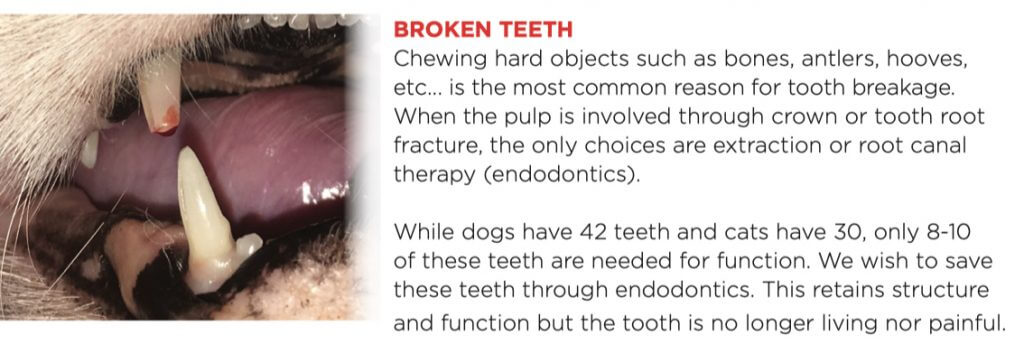
he center of the tooth is the blood and nerves, called the pulp.
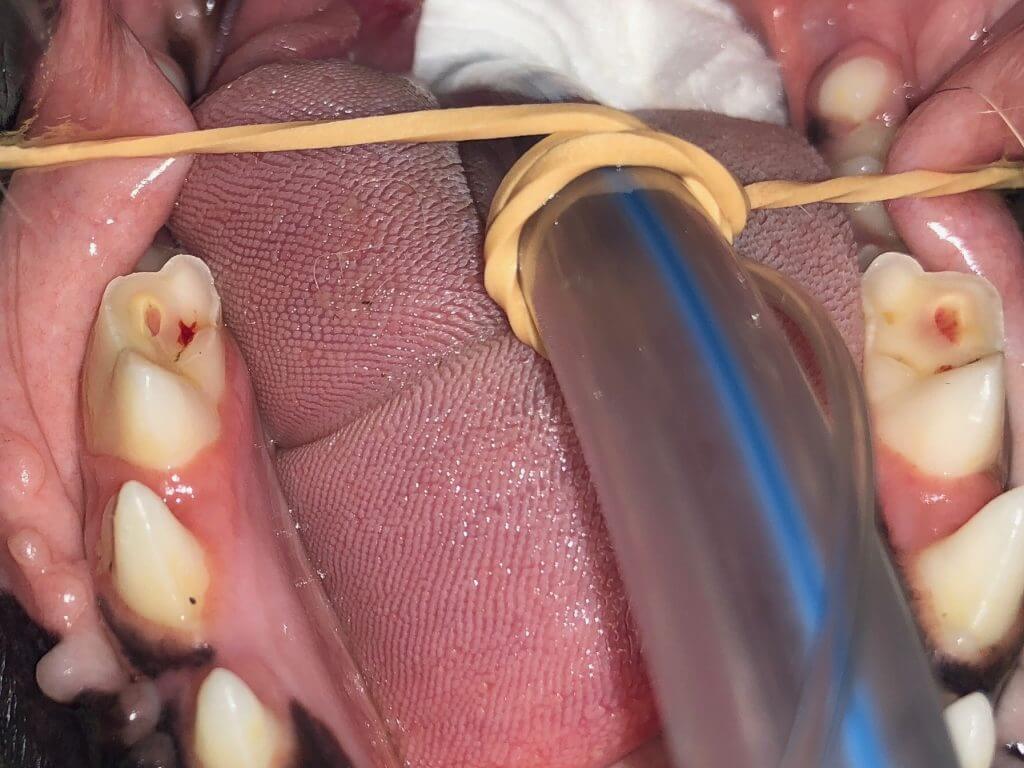
As stated above, once the pulp is compromised, a tooth must be extracted or have root canal therapy. Root canal therapy is known as endodontics. The pulp is removed and the bony walls of the tooth are cleaned with special tiny files. The area is flushed and disinfected, then dried. The root canal is then filled with gutta percha (reminds me of rubber) to wall off this tooth from the rest of the body. The opening is then sealed with tooth colored composite sort of like your dentist seals human cavities. While that all sounds simple enough, there are many techniques and expensive human supplies that are needed to complete the procedure well.
The bleeding broken tooth as shown above is usually not the case. In fact, the tooth didn’t even look like it affected the pulp:
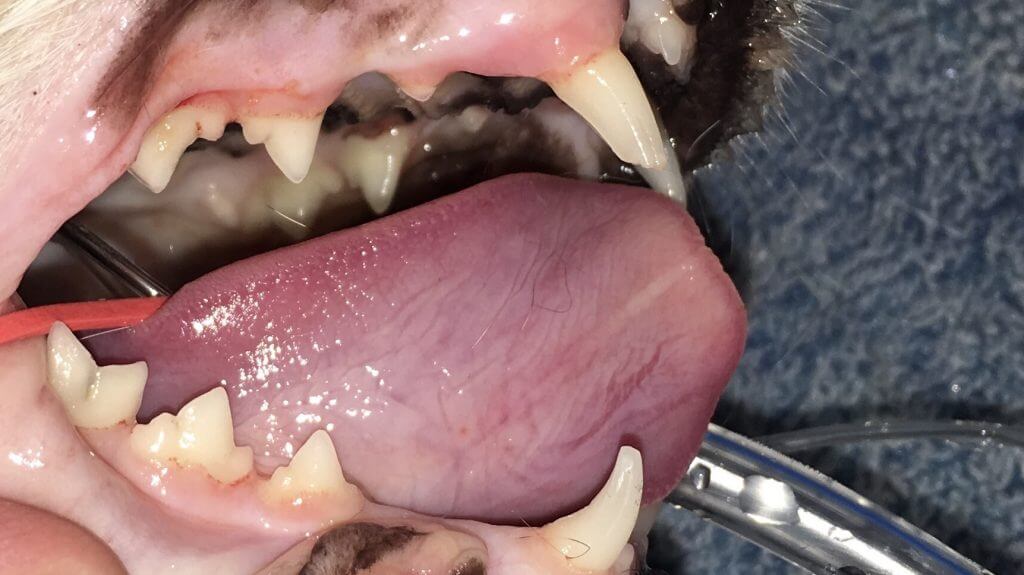
Sadly, a magnified anesthetic exam showed otherwise.
It is important to not ignore broken teeth as infection will cause problems locally and systemically.
Each root of a tooth must be accessed and cleaned making some teeth like the three rooted tooth below more of a challenge than others to treat. Holes need to be made into the tooth to reach each root. Although necessary, these holes weaken the tooth such that all teeth receiving endodontic therapy are best served with application of a full metal (titanium alloy) crown. Once the root canal therapy has been completed, the pet is left with a non-painful, non-vital tooth that still functions. The good news is that endodontic therapy is around 93% successful!
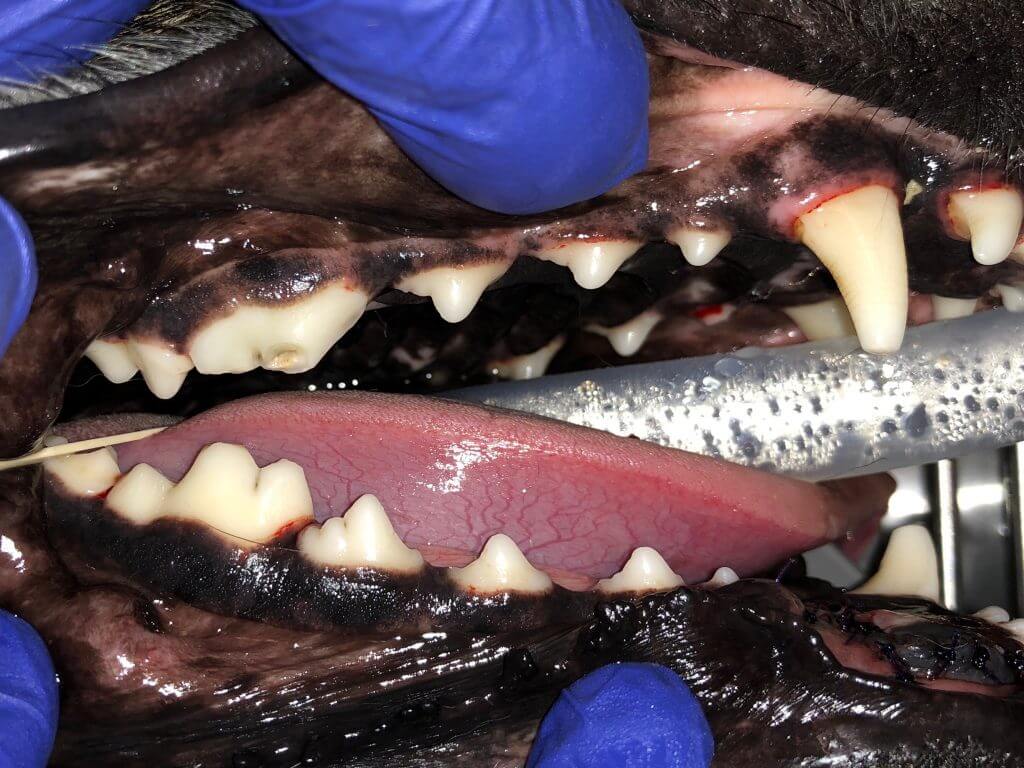
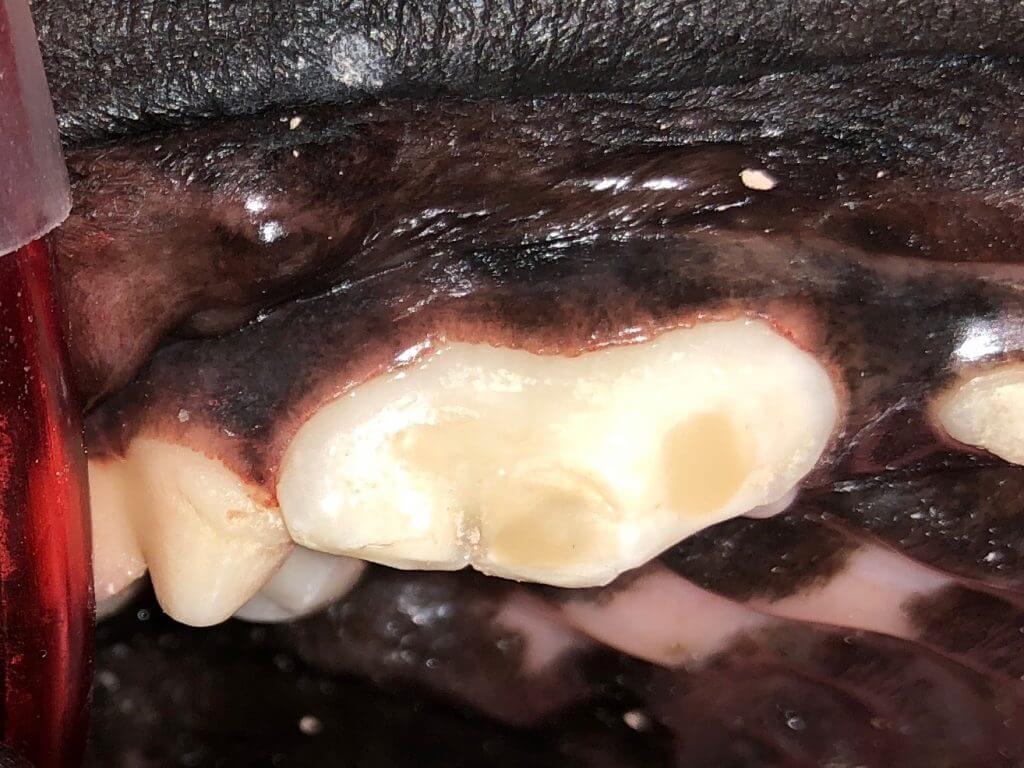
Contact us to learn more about root canal therapy for your pet!
